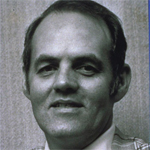As the Association of Rheumatology Health Professionals (ARHP) continues to celebrate its 50th anniversary, The Rheumatologist recently spent time with Charter Member and Past President Marlin N. Shields, RPT, discussing the history of the ARHP and the changes he has seen in rheumatology.
One topic that was, and remains, near and dear to him is collaborative care and patient empowerment. Although some may see these as two different topics, he often speaks of the two as one, with a belief that collaborative care is all about patients—what is in their best interest and how to provide the best care to meet their needs.
Although collaborative care and patient empowerment may just be reaching the main stage in healthcare, Mr. Shields remembers his first introduction to the idea, which came via a forward-thinking rheumatologist in the 1950s.
New Careers & New Approaches to Care
Two healthcare professionals met in the 1950s at the University of Utah. One was a rheumatologist, John R. Ward, MD (1923–2004), who had just completed his training in Boston. The other was a physical therapist, Mr. Shields, who had recently graduated from Stanford University, Palo Alto, Calif., and joined the university’s staff.

Marlin N. Shields, RPT
Mr. Shields was prepared for the typical physician–PT relationship: Physicians would tell therapists exactly what to do, they would execute those orders, patients would receive treatment, and the hospital would bill the payer for the services.
“When I graduated from physical therapy school, physical therapists, occupational therapists and others worked on specific orders from physicians,” Mr. Shields explains of the expectation. “They would write ‘hot pack on right shoulder for 15 minutes,’ and you simply carried out the orders. So there was no question that we worked for the physicians.”
But he quickly realized that Dr. Ward had a different idea—a more collaborative idea. Dr. Ward was interested in what healthcare professionals could do to help him, and he began the process of working with the healthcare team to learn about their skills and abilities.
“Dr. Ward wanted my opinion. He wanted all of us to be thinking and contributing. He listened. And from that, we—rheumatologists, OTs, PTs, social workers, surgeons, etc.—formed a team where everyone had input.”
The Patient on the Team
A vital part of collaborative care for the team was ensuring patients played an active role in their treatment programs—making them a part of the team—and as Mr. Shields progressed in his career, this became a top priority for him.



